Boldon James Configuration
Introduction
Boldon James Classifier
Boldon James Classifier provides a service endpoint (SOAP) which can be used and integrated with SharePoint. Boldon James Classifier Service collects the classification policies from the corporate policy server and populates the same as properties of documents in SharePoint. Users can use the classifier labels and select the appropriate value for each document/item in SharePoint. This classifier service more improved way of classifying and securing the contents uploaded/added to SharePoint.
SharePoint
Boldon James Classifier comes with different version. If you are using SharePoint 2010, you can use Boldon James Classifier 2010. If you are using SharePoint 2013, you can make use of Bolder James Classifier 2013.
Integrating Boldon James Classifier requires below:
- Installation of appropriate Boldon James Classifier Service (2010/2013)
- Adding and Deploying Boldon James Classifier Solution
- Activating Boldon James Classifier in SharePoint site and document library
Setup Application Pool and Web site for Boldon James Classifier
Before you go ahead and integrate Boldon James Classifier with SharePoint, you need to setup an application pool and web site which can be used by Boldon James Classifier Service.
Create Application Pool
Step 1: Navigate to Internet Information Services (IIS)
Step 2: Right Click on “Application Pools” and then click on “Add Application Pool”

Step 3: Provide a name for the application pool and select .Net version as v2.0.50727
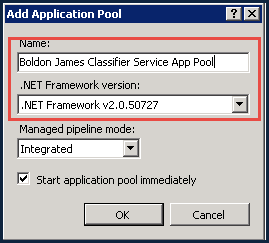
Step 4: Set service account as application pool identity
Right click on the application pool and then click on “Advanced Settings”

Change the application pool account from default “ApplicationPoolIdentity” to service account.
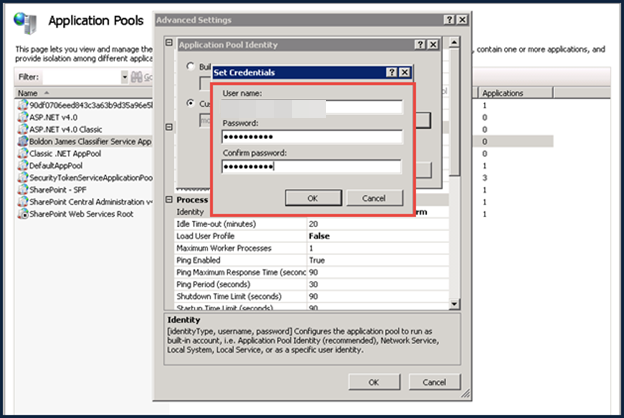
Once done changing the identity, please restart the app pool
Create Web Site
Step 1: Navigate to the folder where IIS Virtual Directories are present. Default Location is C:\inetpub\wwwroot\wss\VirtualDirectories
Step 2: Create a new folder with some name (for e.g. Boldon James)
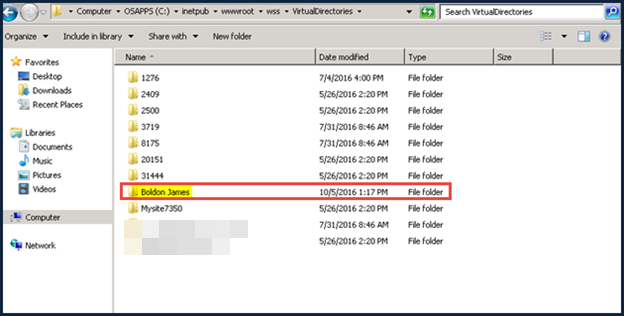
Step 3: Verify permissions for service account on new folder
Make sure the farm service account has full control on the newly created folder
Step 4: Ensure Service Account is part of “Administrators and “WSS_ADMIN_WPG” groups
Navigate to “Local Users and Groups” (Start à Run à lusrmgr.msc). Verify account is part of the above mentioned groups.
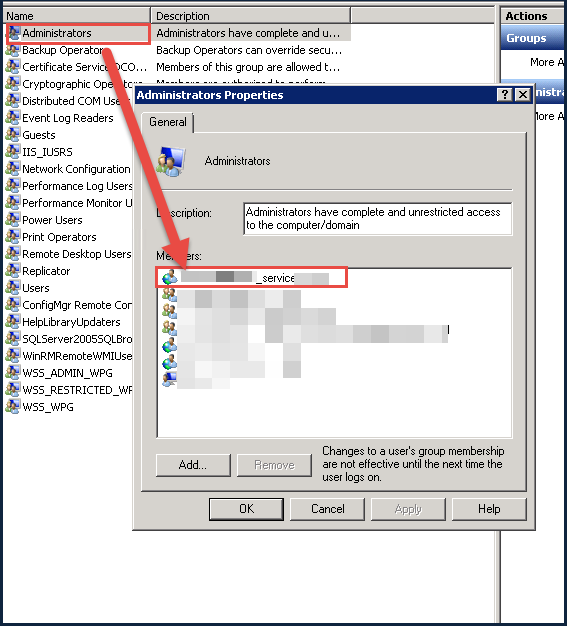
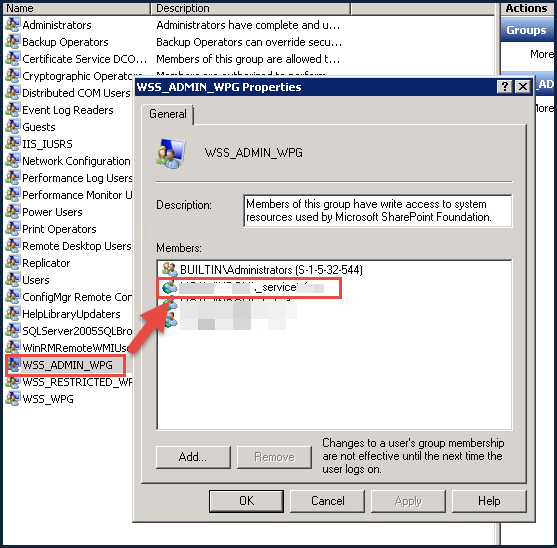
Step 5: Navigate to IIS and right click on “Sites”, then select Add Web Site” option

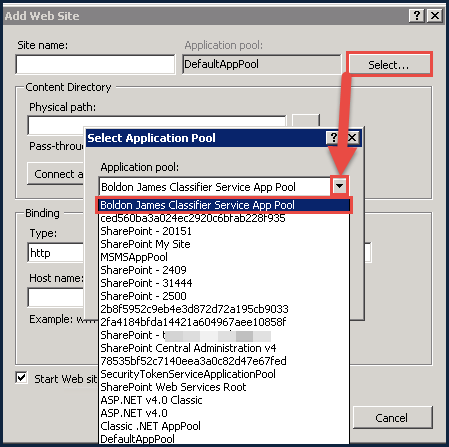
Step 7: Enter the required Details
- Site Name: BJ – Classifier Service
- Physical Path: Path of the folder you created in Step 2 of this section. In this case, it is C:\inetpub\wwwroot\wss\VirtualDirectories\Boldon James
Note: In below screenshot it shows some other path. Don’t get confused or carried away. Ignore that and put the actual path of folder which you created.
- Port: 8080 [Please don’t specify any other port, otherwise classifier service will not work].
- Host Name: bj-classifierservice.domain.com
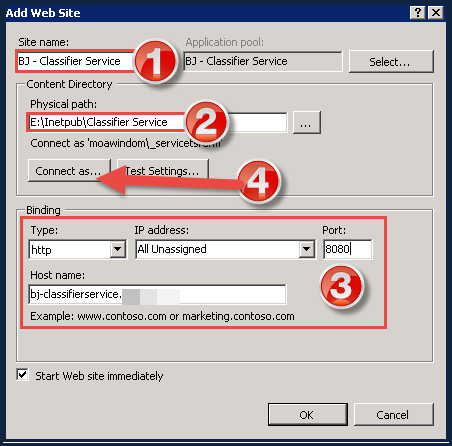
Step 8: Change the service account to be used for site
- Click on “Connect as” as shown in 4th point in above screenshot.
- Select the option “Specific user” as shown below and click on “Set” button to specify the credentials. Once done, click Ok.
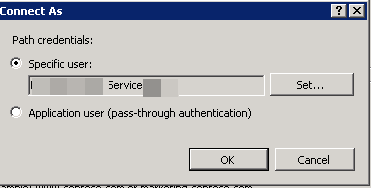
Step 9: Now click on “Test settings” to validate the connectivity.
Step 10: Finish creation of site by Clicking on Ok button.
Installing Boldon James Classifier Service
Install the Setup
Go to the folder where Classifier Package is available.
Step 1: Run Setup.exe as administrator.
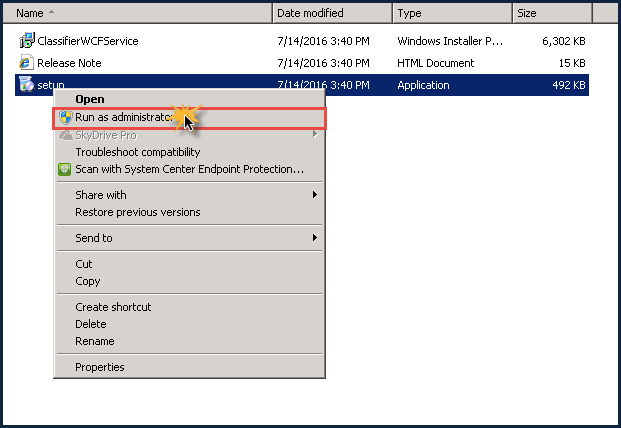
Step 2: Allow User Access Control to run the exe by clicking on Yes
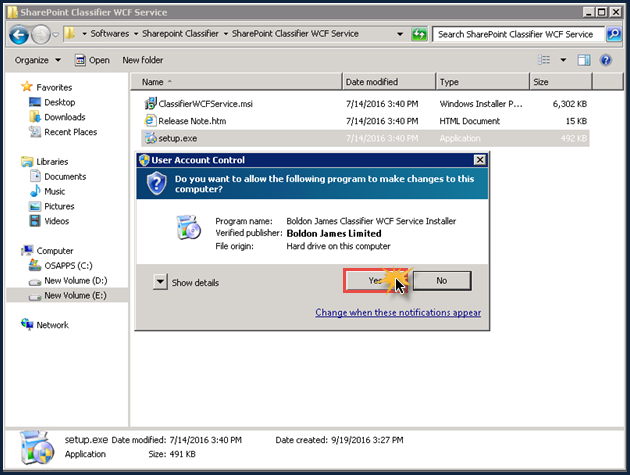
Step 3: Click Next and agree to the license terms.
Step 4: Select Site which you created for Classifier Service.
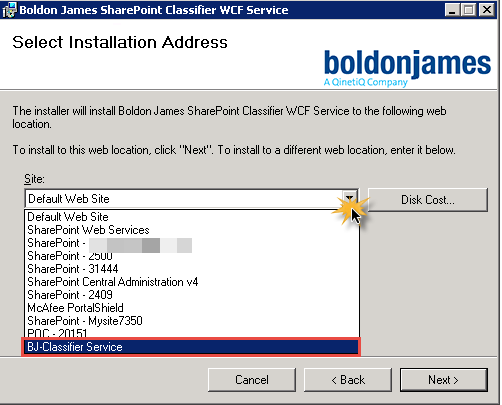
Step 5: Select Application Pool which you created for Classifier Service.
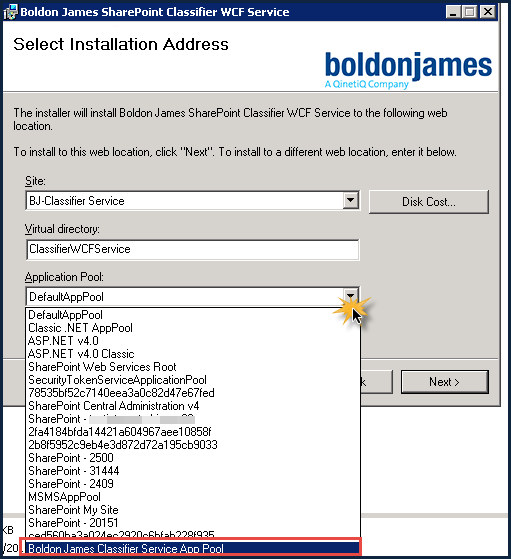
Step 6: Verify the settings and click Next.
Note: Make sure you don’t change the Virtual Directory name.
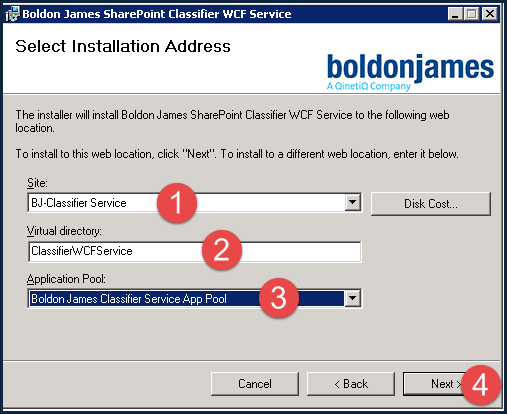
Step 7: Start the installation.
Step 8: Finish the installation.
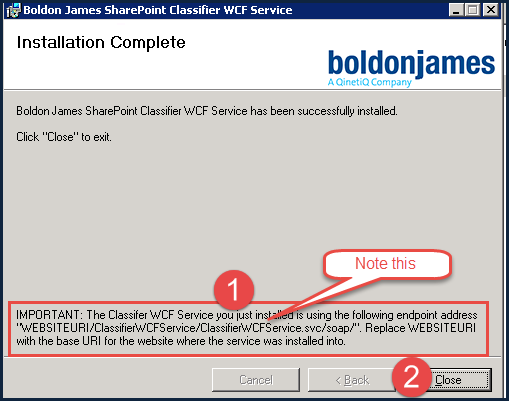
Make a note of endpoint URL format: Make a note of the endpoint URL mentioned in the below screenshot as “Important”
Website URI should be replaced by the site URL which we created in the previous step. This will be used for enabling the classifier service in the document library in SharePoint. This will discussed later in this article.
Ex: http://www.sharepoint.com:8080/ClassifierWCFService/ClassifierWCFService.svc/soap/ à this would be the endpoint URL if the web site URL you created is www.sharepoint.com . The reason for specifying the port number as 8080 here is because we created the site using 8080 port number.
Setup registry
Step 1: Open Registry Editor (Start > Run > regedit.exe).
Step 2: Navigate to the below key.
“HKEY_LOCAL_MACHINE\SOFTWARE\Boldon James\ConfigManager”
At this point, you will see nothing in this folder except “Default” Key.
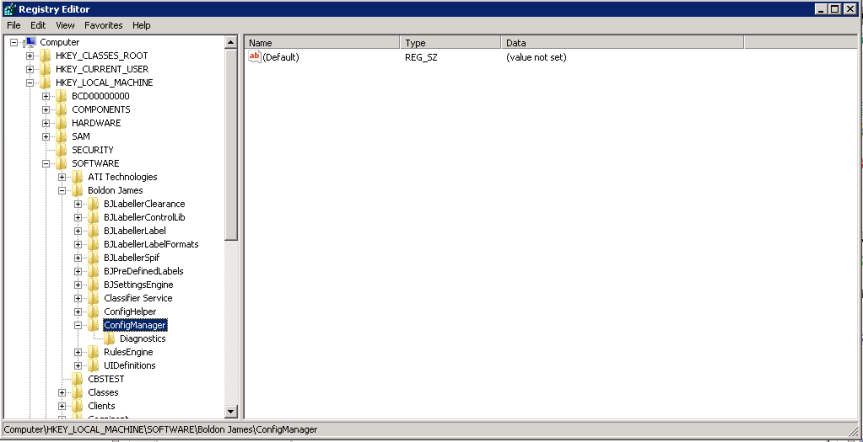
Step 3: Create required registries as per below table.
| Reg Key Name |
Reg Key Type |
Reg Value |
| ServerRootType |
REG_DWORD |
0 |
| ServerFileSystemRoot |
REG_SZ(String Value) |
Network Path where Policy Configuration Folder is present (i.e. \\ServerName\ProgData\Data Classification\Config) wherein ServerName is the server where policy is configured. |
| LabelConfiguration |
REG_SZ |
Name of the Labels folder (paste the value as Policies) wherein Policies is the folder in which all the labels are configured in ServerName. |
| Policy |
REG_SZ |
All users (mention as All users) |
Demonstration of new key creation:
Right click in blank space area. click on New and Select appropriate type of key as per the table above.
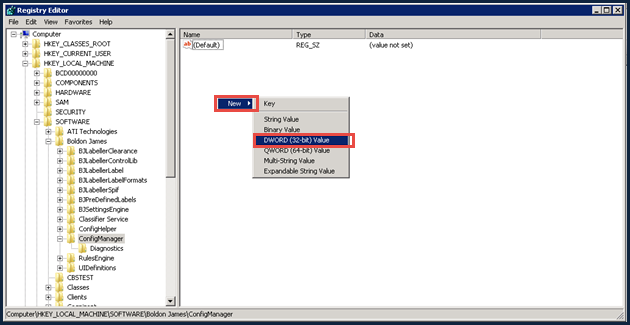
Enter the Name of key

Now, right click and select Modify
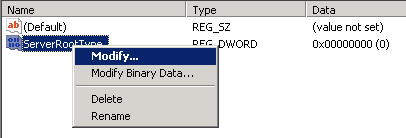
Enter Value and click Ok.
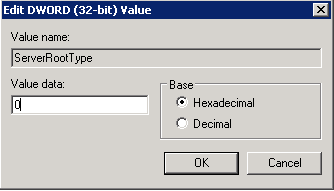
Repeat this for creating all the entries.
Finally, it will look like below.
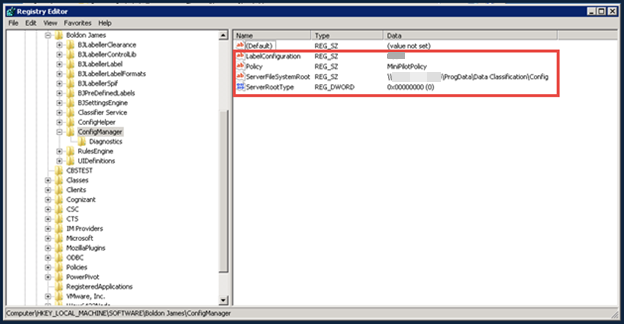
Now that the configuration of Classifier service is done, let’s move further and deploy the WSP solution.
Deploy Boldon James Classifier Solution for SharePoint
Navigate to the folder “SharePoint 2010” or “SharePoint 2013” based on the version of SharePoint installed in your server and get the wsp file path. This will be used for adding the solution.
Ex for SP 2013 : E:\software\Bolden James\Sharepoint Classifier\Sharepoint Classifier 2013
Step 1: Run SharePoint PowerShell using Service Account.
Step 2: Add the WSP solution to the farm.
Run below command to add the solution to farm.
Add-SPSolution –LiteralPath
Example:
Add-SPSolution –LiteralPath “E:\software\Bolden James\Sharepoint Classifier\Sharepoint Classifier 2013\Boldon James SharePoint Classifier.wsp”

Once the command executes successfully, you will see the solution.

To verify in CA, navigate to Central Administration > System Settings > Manage Farm Solutions. You will see the WSP solution added. However, status will be shown as “Not Deployed”.

If you click on the WSP name, you can see more details about the solution.
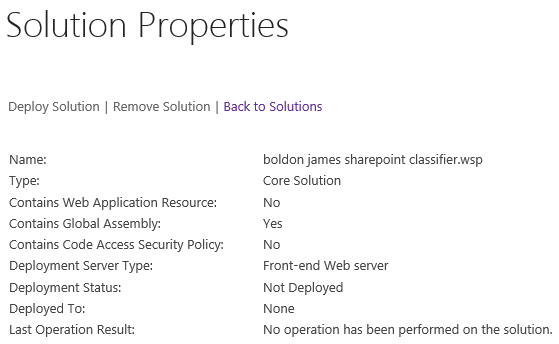
Step 3: Deploy the solution.
Deploy the solution using below command or you can deploy it using the “Deploy Solution” link appearing on solution properties page as shown in above screenshot.
Install-SPSolution –Identity “boldon james sharepoint classifier.wsp” –GACDeployment

Deployment of the solution will started and you can see the status in Solution Management page.
This slideshow requires JavaScript.
Configure SharePoint Site(s) to avail Boldon James Classifier Service
There are three steps to configure classifier in SharePoint.
- Activate the feature at site collection level
- Apply the service endpoint
- Add the classifier endpoint to the library
Create a new SharePoint site (Team site template)
1. Activate Feature
Step 1: Open Site Collection Features.
Go to site collection settings > Site collection features
Step 2: Spot the feature “Boldon James SharePoint Classifier Document Library”.
Step 3: Activate the feature by clicking on “Activate” button.

Step 4: Verify that the feature is activated.

2. Apply Classifier Endpoint
Step 1: Navigate to Site Settings.
Step 2: Open “Boldon James Classifier Site Collection Settings” under “Site Collection Administration”.
Step 3: Provide the service endpoint URL and click on “Apply service endpoint to this site”.
Note: The Endpoint address is the one which you noted at the time of finishing the Boldon James Classifier Service installation. (i.e. http://www.sharepoint.com:8080/ClassifierWCFService/ClassifierWCFService.svc/soap/ )
In this case, it is http://bj-classifier.domain.com:8080/ClassifierWCFService/ClassifierWCFService.svc/soap/
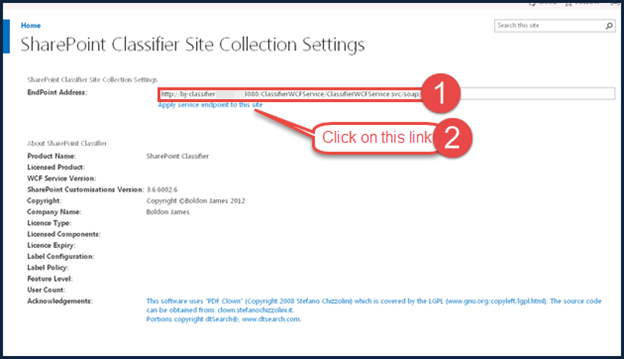
If it fails as shown below. Follow the instructions described in “Classifier Web Site Issues and Solutions”.

Once the issues are fixed, repeat this step again. It should apply the service endpoint to site successfully.
It will also populate all the values as shown below.
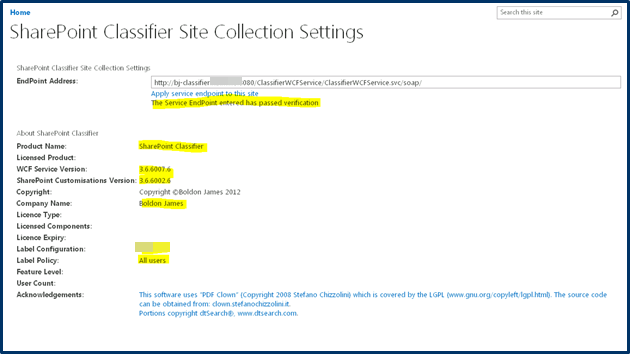
3. Apply SharePoint Classifier to Library
Step 1: Navigate to the document library where you want to use Classifier.
Step 2: On the ribbon, click on “Library” tab and then click on “Classifier Settings” button appearing at the extreme right.

Step 3: Click on “Add SharePoint Classifier”.
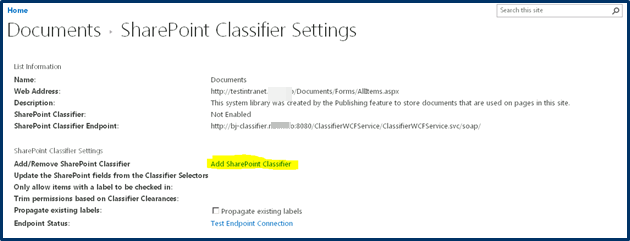
Testing the functionality
Step 1: Navigate to Document Library where you have added the SharePoint Classifier.
Step 2: Upload a document.
Step 3: Select the file by clicking on “Check” mark appearing at left side of the file name. Once selected, click on “Files” tab on ribbon, you will see “Classifier” button highlighted as below

Click on the Classifier button
Now “Classifier Label” dialog will appear as shown in below step.
Step 4: Select a classification value and click Ok.
Hints:
- Clicking on the Confidentiality category sets the classification value for the document.
- Clicking on “Clear” button clears the classification.
- Clicking on “Default” applies the default value as per policy.
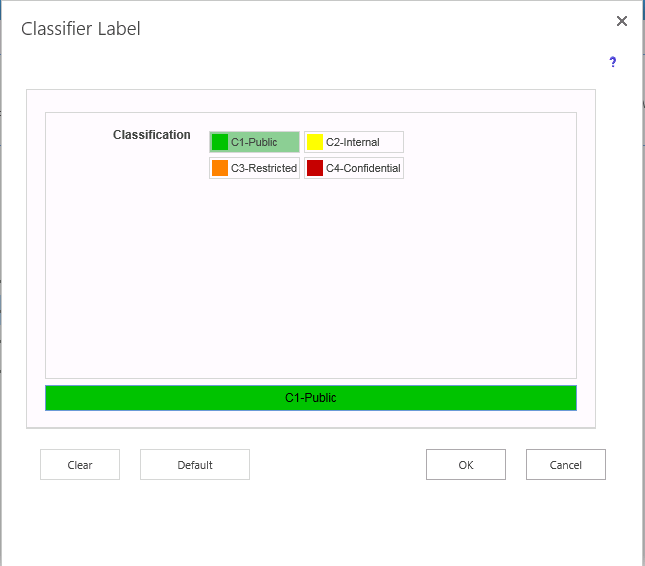
Step 5: Verify the classification.
Once you click Ok after selecting a classification label, you should be able to see the same in document properties as shown below.
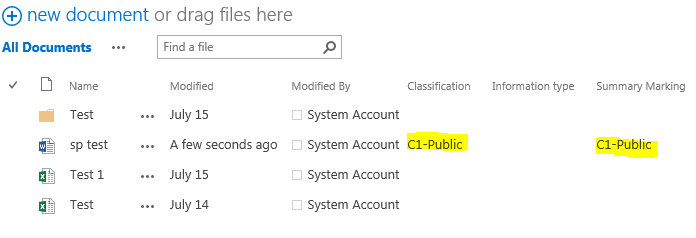
Classifier Web Site Issues and Solutions
First check if the Classifier website that we created initially is loading successfully. Else if will throw an error as shown below.
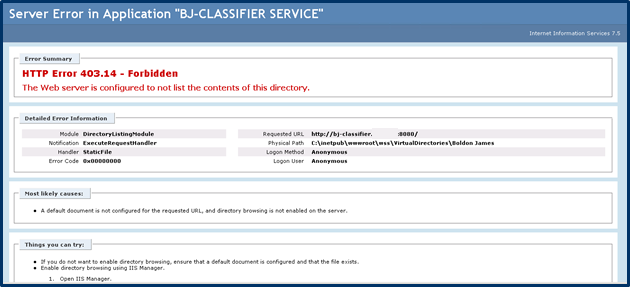
To fix the above error, navigate to IIS Manager and click on the “Bolden James classifier site “ that we created before. Open “Directory Browsing” module under IIS section.
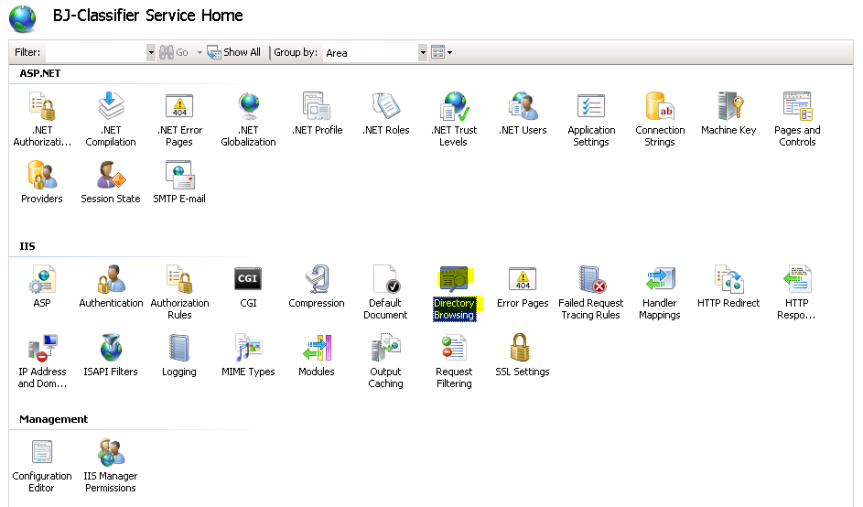
And click on the “Enable” button towards your right hand side.
Once done go ahead and restart the site in IIS
Try to navigate to the site again and see if it works now .You should see the below which confirms that the site is working fine.
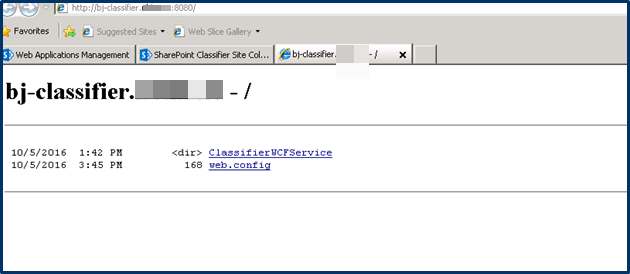
Once done, click on “ClassifierWCFService” link which you see in the image above and confirm that it loads fine.
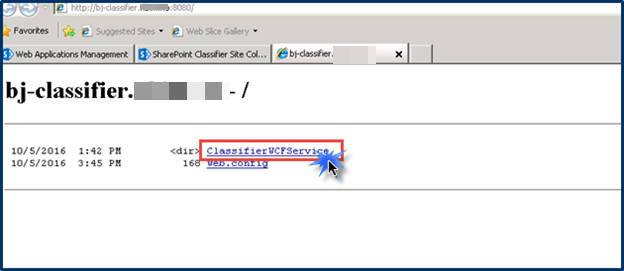
It might throw an error as shown in the image below.
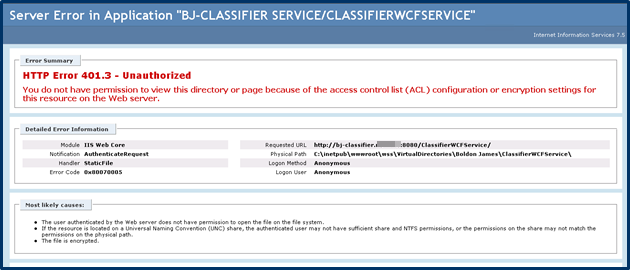
In order to fix this issue, again go to IIS manager, select the Boldon James site. Open “Authentication” module and enable “Basic and Windows Authentication”
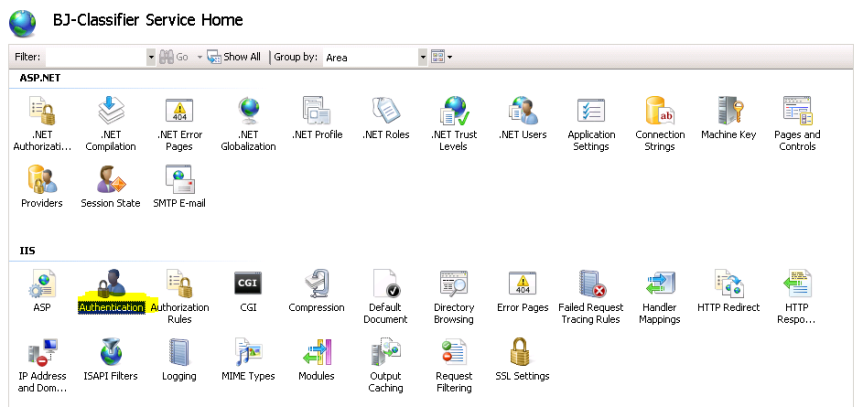
Once done, please restart the website and try to open the site again .This may throw an error as shown below and this can safely ignored.
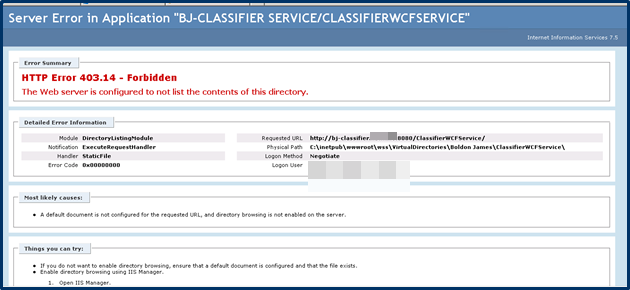
Add ClassifierWCFService.svc at the end of URL (Full URL will look like this: http://bj-classifier.domain.com:8080/ClassifierWCFService/ClassifierWCFService.svc) and browse it. It should load successfully as below if this step is successful, you should be able to apply the service end point to SP site.
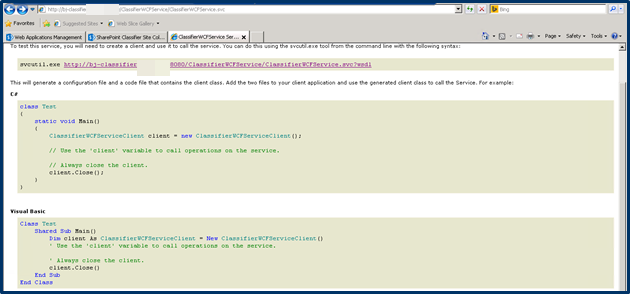






















































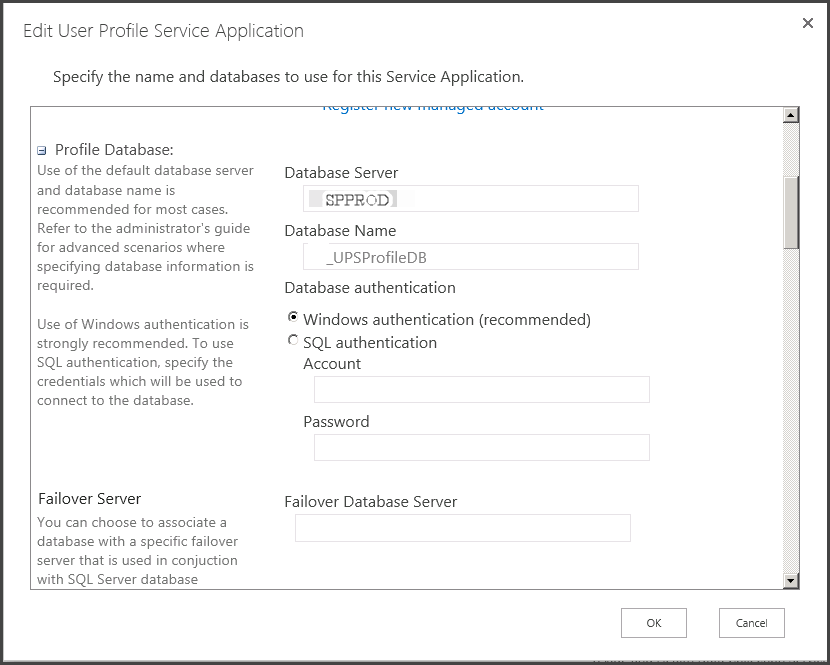




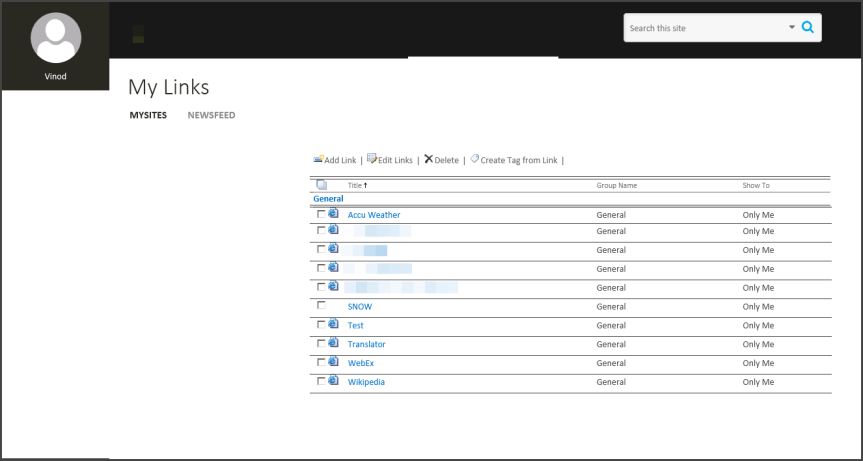
You must be logged in to post a comment.